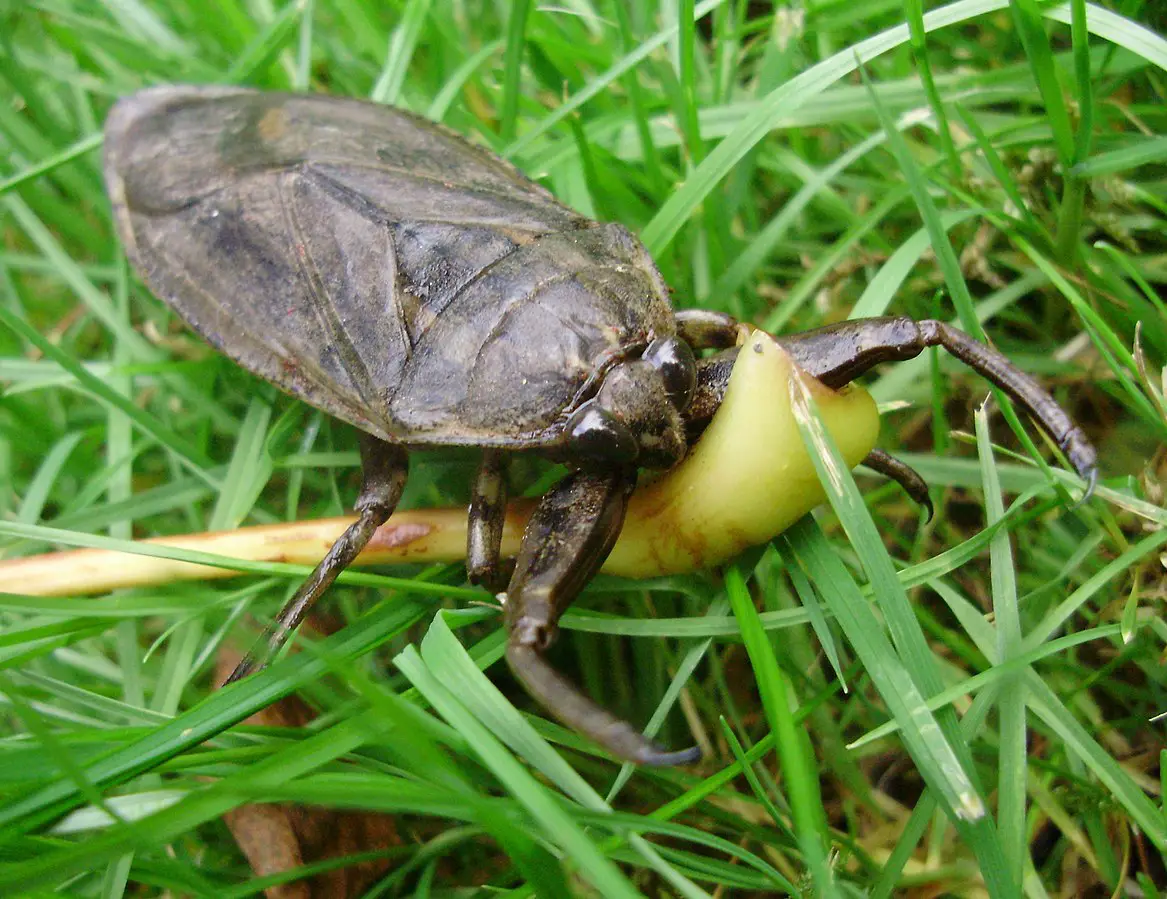Unveiling the World of Water Bugs: Types, Behavior, and Prevention
In the realm of aquatic ecosystems, water bugs stand as intriguing inhabitants, playing vital roles in the delicate balance of underwater life. Understanding their behavior, characteristics, and interactions can shed light on their significance within these ecosystems.

Defining Water Bugs: Navigating the Terminology
Water bugs encompass a diverse group of aquatic insects that thrive in various aquatic environments. The term “water bug” is often used interchangeably with terms like “aquatic bugs” or “pond bugs,” referring to insects that spend a significant portion of their lives in water. These creatures exhibit fascinating behaviors and adaptations that enable them to navigate their watery homes.
Unraveling the Intricacies of Water Bug Behavior
Water bugs exhibit an array of behaviors that contribute to their survival and ecological roles. Some species are skilled predators, preying on smaller aquatic organisms, while others scavenge for organic matter. Their ability to adapt to different niches within aquatic habitats highlights their versatility.
Types of Water Bugs
Water bugs come in a plethora of species, each with unique characteristics and adaptations suited to their specific environments.
Diverse Varieties: Exploring Common Water Bug Species
Backswimmers (Notonectidae):
Recognizable by their upside-down swimming position, backswimmers are skilled predators with needle-like mouthparts that they use to pierce and consume their prey.
Water Boatmen (Corixidae):
Water boatmen use their oar-like hind legs to propel themselves through water, feeding on algae and detritus.
Giant Water Bugs (Belostomatidae):
Known for their larger size, giant water bugs are formidable predators that can deliver a painful bite if handled. They are also called “electric light bugs” due to their attraction to artificial lights at night.
Classification and Characteristics of Water Bugs
Water bugs belong to the order Hemiptera and are further classified into families based on their unique traits. Their bodies are adapted for aquatic life, often featuring flattened shapes, specialized legs for swimming, and respiratory adaptations that allow them to extract oxygen from water.
Habitats and Behavior of Water Bugs
Aquatic Environments: Where Water Bugs Thrive
Water bugs inhabit a variety of aquatic environments, from freshwater ponds and lakes to slow-moving streams and even marshes. They are well adapted to life in water, with their specialized traits enabling them to navigate and exploit these habitats.
Navigating Water Bug Activities and Lifecycles
The lifecycles of water bugs often include distinct stages such as egg, nymph, and adult. Nymphs, which resemble smaller versions of adults, undergo several molts as they grow. Their activities vary based on species, with some water bugs actively hunting for prey, while others filter-feed on microscopic organisms.
The Role of Water Bugs in Ecosystems
Water Bugs’ Ecological Significance: Predator or Prey?
Water bugs play a vital ecological role as both predators and prey. Predatory species help control populations of smaller aquatic organisms, contributing to the balance of aquatic food webs. Their voracious appetites for mosquito larvae and other pests make them valuable allies in natural pest control.
Understanding Water Bugs’ Impact on Aquatic Balance
Water bugs’ interactions with other organisms can have cascading effects within aquatic ecosystems. As predators, they influence the abundance and behavior of their prey species. Additionally, water bugs serve as a food source for larger aquatic animals, further connecting them to the intricate web of life in water environments.
Identifying Water Bugs: Appearance and Symptoms
Visual Traits: How to Recognize Different Water Bug Species
Water bugs exhibit various physical characteristics that help distinguish them from other aquatic organisms. These traits include body shape, size, coloration, and distinctive adaptations like the oar-like hind legs of water boatmen.
Signs of Water Bug Presence and Potential Health Concerns
The presence of water bugs in aquatic environments can indicate the overall health of the ecosystem. An abundance of certain species may suggest imbalances in the food chain. While most water bugs are harmless to humans, some species, like the giant water bug, can deliver a painful bite if handled.
Preventing and Managing Water Bug Infestations
Shielding Your Space: Strategies for Preventing Water Bug Intrusions
To prevent water bug infestations in homes or outdoor spaces, consider sealing cracks and crevices in buildings, ensuring proper drainage to eliminate standing water, and using screens on windows and doors. Removing potential food sources can discourage water bugs from entering human-inhabited areas.
Navigating Effective Solutions for Water Bug Removal
If water bug populations become problematic, various methods can be employed for removal. Physical removal by using nets or traps is one approach. Alternatively, eco-friendly insecticides or professional pest control services can help manage infestations.
Natural and Eco-Friendly Approaches
Environmentally Conscious Solutions to Water Bug Control
For those who prioritize environmentally friendly solutions, consider using natural repellents like essential oils, neem oil, or diatomaceous earth. These options can be effective in deterring water bugs without harming the ecosystem.
Balancing Pest Management and Preservation
Maintaining a balanced approach to water bug control is crucial. While managing infestations is necessary for human comfort, it’s also essential to respect the ecological role of water bugs in aquatic environments.
DIY vs. Professional Water Bug Extermination
Weighing the Pros and Cons of DIY Water Bug Removal
When faced with a water bug issue, individuals often contemplate whether to tackle the problem themselves or seek professional assistance. DIY methods can include physical removal, sealing entry points, and using natural repellents. While DIY approaches are cost-effective and can work for minor infestations, they may not be as effective for larger or persistent problems.
Enlisting Expert Help: When to Seek Professional Assistance
For significant water bug infestations, enlisting the expertise of professional pest control services is recommended. Pest control professionals have the knowledge, tools, and experience to identify the extent of the infestation and implement effective strategies for removal and prevention.
Common Misconceptions about Water Bugs
Debunking Myths: Clarifying Water Bug Misunderstandings
Misconceptions about water bugs can lead to unnecessary fears and concerns. Addressing these myths is essential for fostering a better understanding of these aquatic insects.
Separating Facts from Fiction: Understanding Water Bug Realities
Water bugs are often mistaken for other insects, and their ecological roles can be misunderstood. Clearing up these misconceptions can promote coexistence and informed decision-making.
Frequently Asked Questions (FAQs) About Water Bugs and Their Management
1. What are water bugs, and where are they commonly found?
Water bugs are aquatic insects that thrive in freshwater environments such as ponds, lakes, and slow-moving streams.
2. Are water bugs harmful to humans?
Most water bug species are harmless to humans. However, certain species like the giant water bug can deliver a painful bite if handled.
3. How can I identify different types of water bugs?
Water bug species vary in appearance, size, and behavior. Common visual traits include body shape, coloration, and distinctive adaptations.
4. What roles do water bugs play in aquatic ecosystems?
Water bugs serve as both predators and prey within aquatic food webs. They contribute to the balance of populations and impact the overall health of ecosystems.
5. Can water bugs infest homes?
While water bugs are more commonly found in natural aquatic environments, some species can accidentally find their way into homes, especially in damp areas.
6. How can I prevent water bug infestations?
Preventing water bug infestations involves eliminating standing water, sealing cracks, and ensuring proper drainage to discourage their presence.
7. What natural repellents can deter water bugs?
Natural repellents like essential oils, neem oil, and diatomaceous earth can be used to deter water bugs from entering human-inhabited areas.
8. When should I seek professional help for water bug infestations?
Professional pest control services are recommended for significant water bug infestations that DIY methods may not effectively address.
9. Are water bugs environmentally significant?
Yes, water bugs play a vital role in aquatic ecosystems by controlling populations of other aquatic organisms and contributing to the food chain.
10. How can I coexist with water bugs while managing their presence?
Balancing water bug management with ecological respect involves implementing effective strategies while understanding and appreciating their ecological roles.
Conclusion
Understanding the behaviors, roles, and characteristics of water bugs empowers individuals to make informed decisions about prevention and control measures.




